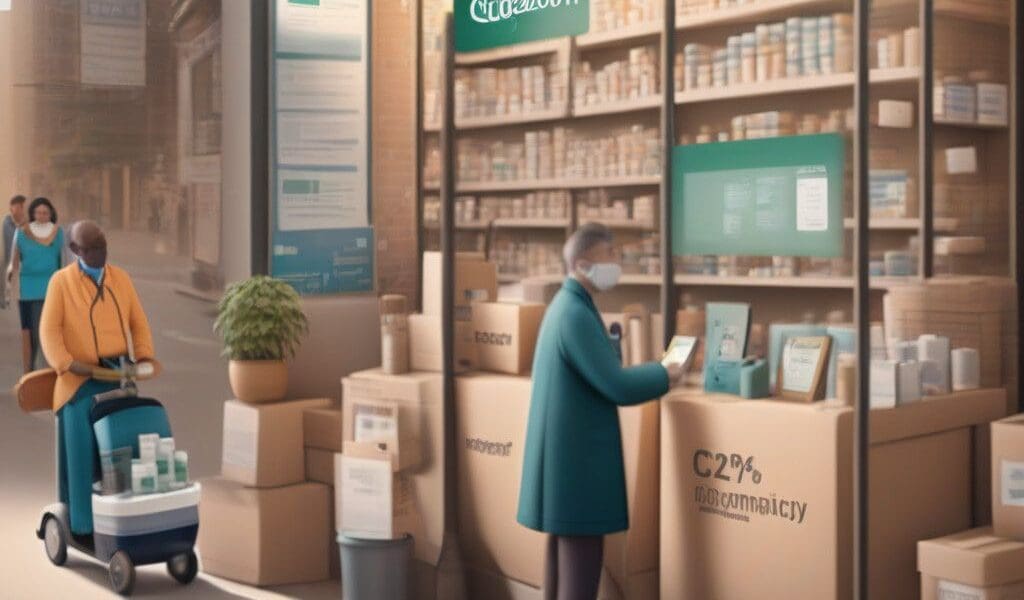Could Amazon have the prescription for success in what has been a challenging retail pharmacy environment? The company is advancing its pharmacy business by expanding operations to 20 new cities next year, offering fast and free delivery of prescription medications alongside round-the-clock access to pharmacists. This significant move by Amazon Pharmacy comes at a time when established rivals such as CVS, Rite Aid, and Walgreens are facing store closures and employee layoffs, signaling a potential shift in how consumers will obtain their medications.
Amazon’s strategy capitalizes on its sophisticated logistics network. Instead of operating brick-and-mortar pharmacies, Amazon has established modular pharmacies within its same-day fulfillment centers. This innovative approach allows the company to enhance its delivery speeds. By the end of 2025, Amazon estimates that 45% of U.S. customers will qualify for same-day delivery of their medications. This model not only makes access to medications easier for consumers but also bridges gaps in areas where traditional pharmacies may be miles apart.
Hannah McClellan, VP of operations, product, and technology at Amazon Pharmacy, highlighted the company’s goal: “We are building a modern pharmacy – what we like to think of as a ‘pharmacy in your pocket’ that offers rapid delivery direct to your door and 24/7 access to our clinical pharmacists whenever you need them.” This approach could be a game changer for patients who struggle to maintain their medication routines due to inaccessibility or inconvenience.
The current state of healthcare delivery in pharmacy leaves much to be desired. Research indicates that up to 30% of prescription medications are never filled, and around 50% of essential medications for chronic diseases are not taken as prescribed. Such statistics underline the critical need for more effective solutions. At Amazon Pharmacy, rapid delivery to a customer’s door is positioned as an effective remedy for these pervasive issues.
Amazon’s use of advanced technologies is central to expanding access to necessary pharmaceuticals. By facilitating faster delivery, the likelihood that patients will promptly engage in their care and follow treatment plans increases significantly. Improved health outcomes naturally follow from such adherence to medication regimens, converting pharmacy access from a challenge into an easy, reliable action.
Another notable feature of the Amazon Pharmacy service is the automatic coupon system and the visibility of estimated costs based on insurance coverage. Customers can also utilize services such as RxPass, a subscription model providing vital medications for as little as $5 a month, which covers 60 commonly prescribed medications. Additionally, Prime members benefit substantially from discounts, receiving up to 80% off generic drugs and 40% off brand-name medications. This dual approach—offering significant savings while ensuring prompt access—sets Amazon apart in today’s pharmacy landscape.
The necessity of these advancements is further amplified by the challenges traditional pharmacies are currently facing. With significant numbers of store closures, Amazon’s growth in the pharmacy sector may well redefine consumer expectations about convenience and service in medication delivery. Competitors must now strategize on how to retain their customer base amidst the emergence of effective alternatives like Amazon Pharmacy.
The implications for both consumers and the retail pharmacy industry are significant. Consumers are empowered with immediate access to their medications, likely leading to better health management. The traditional pharmacy business model, which often relies on foot traffic and in-store visits, must evolve to compete with Amazon’s streamlined, technology-driven operations.
As the pharmaceutical landscape shifts, it remains to be seen how traditional players will respond. They might need to adopt similar automation and delivery solutions to stay relevant. Moreover, by focusing on enhancing customer experience and convenience, traditional pharmacies could minimize the risk of obsolescence.
In conclusion, Amazon’s expansion into pharmacy services is more than just a business growth strategy; it represents a broader trend towards digital health solutions that meet the evolving needs of consumers in a fast-paced world. The company’s integration of pharmacy into its extensive distribution network could herald a new era for medication access, positioning it as a leader in the healthcare delivery revolution.












